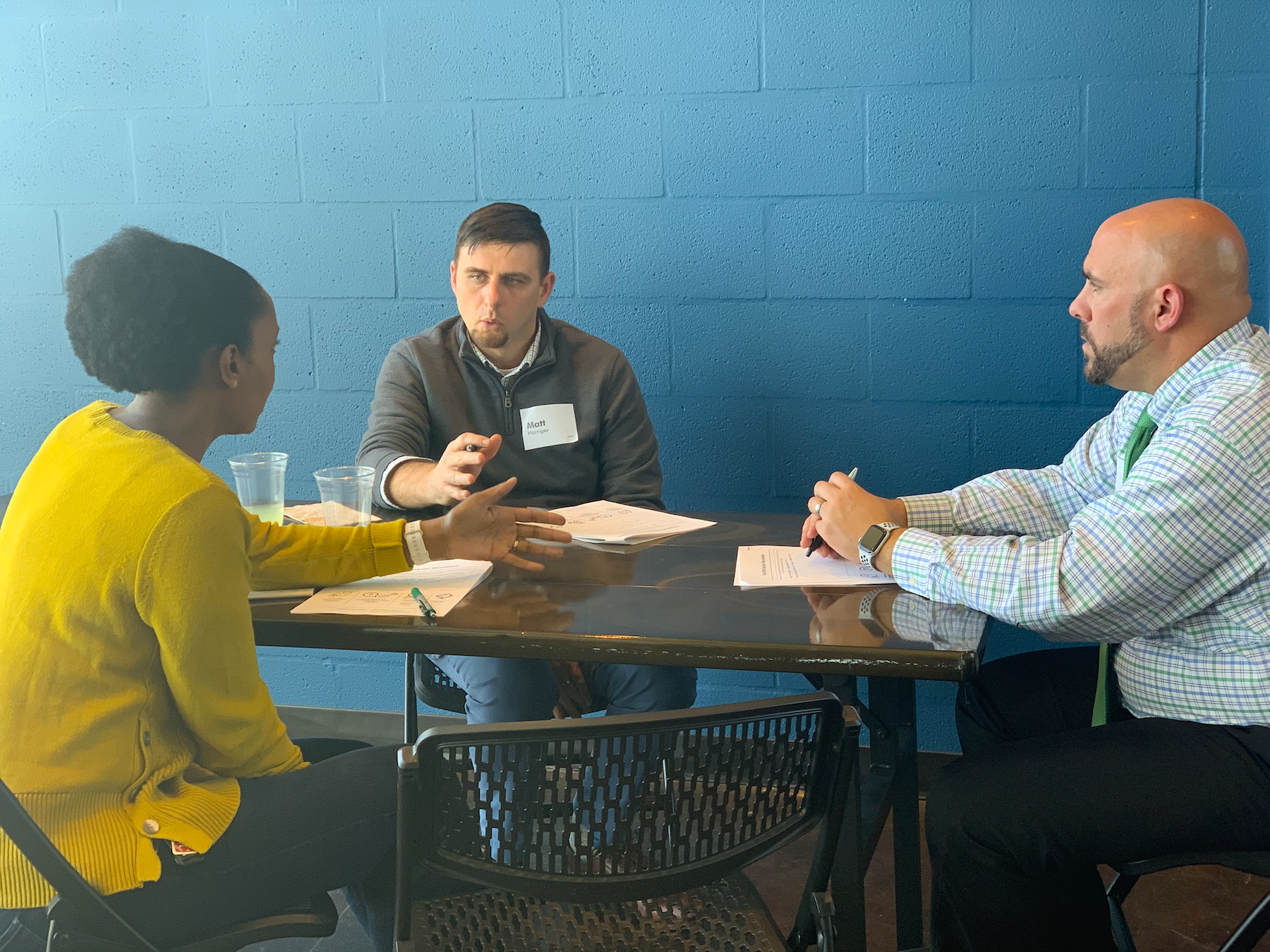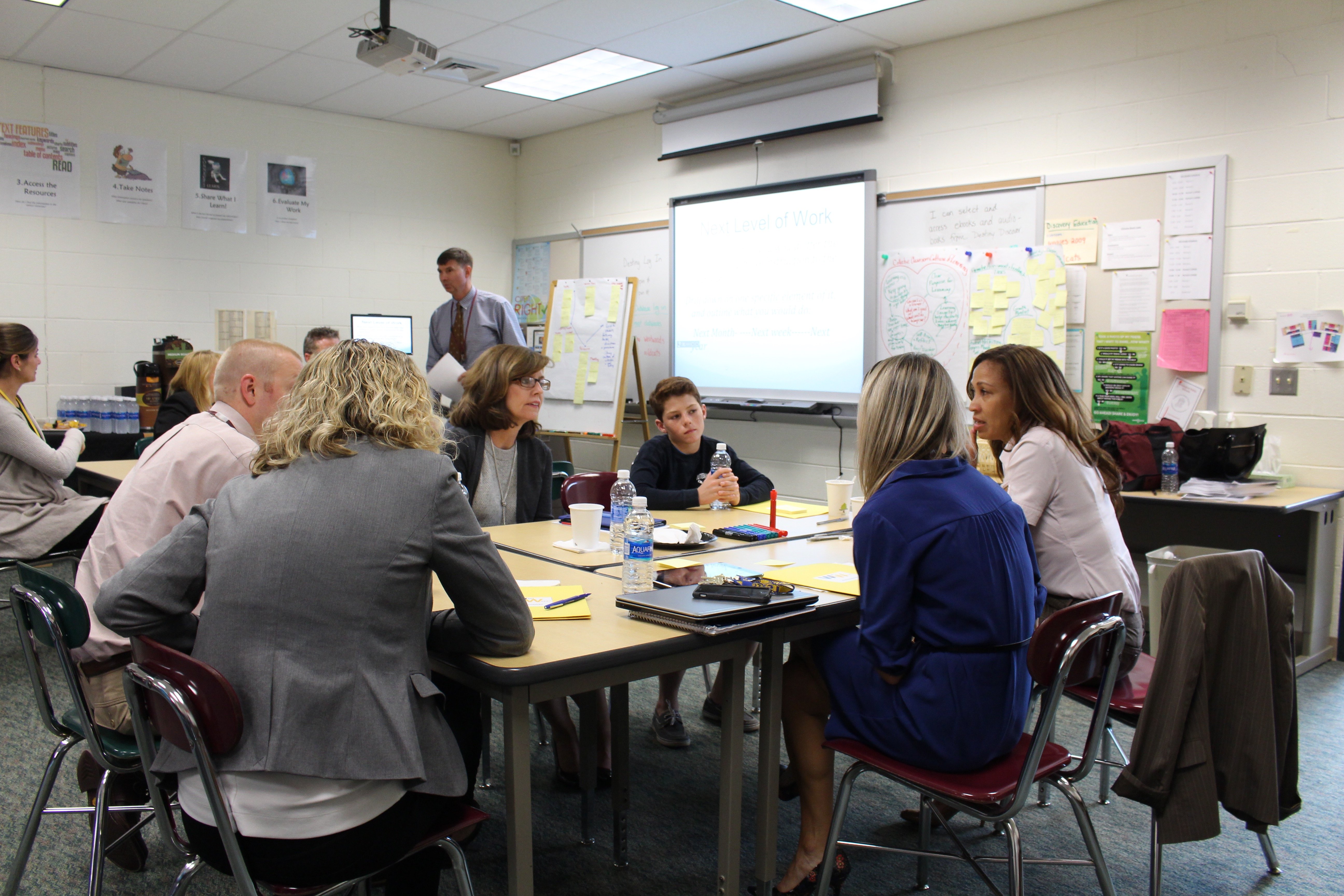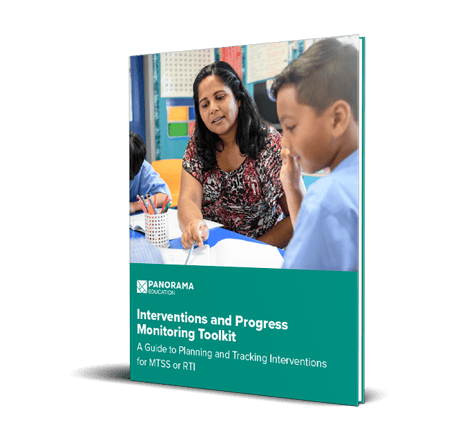A Child Study Team (CST)—also referred to as a Student Support Team, Pupil Personnel Team, Student Intervention Team, Child Assistance Team, or MTSS/RTI Team—plays an essential role in the student support process.
Typically comprised of staff members with specialized training, members of a Child Study Team liaise with teachers regarding students who need additional learning or behavioral assistance. In addition to evaluating students, Child Study Teams recommend strategies to meet a student's needs and collaborate with caregivers on an integrated approach.
Whether you're forming your school district's first Child Study Team or looking to improve your existing CST processes, this article will equip you with knowledge and tools to effectively support learners.
Use the CST Action Planning Template and intervention planning data protocol below to design your CST structures and practices.
Table of Contents
What Does a Child Study Team Do?
Action Planning Templates for Child Study Teams
4 Steps to Data-Driven Intervention Planning for CSTs
|
Key Takeaways:
|
What is a Child Study Team?
A Child Study Team (CST) is a local school team that evaluates and develops plans for students in need of additional academic or other services. Child Study Team members may consist of various staff members and educators, including: a school psychologist, school social worker, a child’s classroom teacher, principal, special education teacher, school nurse, speech/language therapist, guidance counselor, or learning disabilities teacher-consultant (LDTC).
What Does a Child Study Team Do?
The roles and responsibilities of the Child Study Team will vary based on school and district needs. In general, CSTs are responsible for the planning and delivery of educational programs for students who may need support beyond a general education setting. For example, Child Study Team members might:
- Observe students in the classroom and consult with a student's teachers
- Determine eligibility of students for special services, special education programs, or tiered intervention
- Recommend strategies, programs, special education, and related services to meet a student's educational needs
- Communicate and work with parents and community agencies
- Develop and monitor IEPs (Individualized Education Program) along with a case manager, and participate in IEP meetings and annual reviews
- Participate in I&RS (Intervention and Referral Services) and 504 meetings
Action Planning Template for Child Study Teams
Set a strong foundation for how your Child Study Team will support students using the Action Planning Template below! You can also access this CST Action Planning Template as a Google Doc.
Reflect on your school or district's goals or priorities for the Child Study Team process and record any focus areas that come to mind in the box below. This could include improvements you want to make to your existing processes, or general goal setting if you are just getting started with CSTs.
Use the questions below to guide your thinking and conversation around optimizing your CST.
|
When and Where?
|
|
|
Who?
|
|
|
What?
|
|
|
How?
|
|
|
Norms
|
4 Steps to Data-Driven Intervention Planning for CSTs
Data is a critical part of the Child Study Team intervention process. Let’s walk through a typical Child Study Team cycle, focusing on how to use data to identify, support, and monitor students.
Step 1: Screen and Identify Students for CST
Imagine that your school or district is holding its first-ever cycle of CST meetings. In preparation for this meeting time, the first step is to make a list of students who should be referred to the CST or enrolled in Tier 2 based on data.
To do so, you might cross-reference data across grades, assessments, behavior, and attendance. Which students may be eligible for additional support or special education services? Which students are already receiving supports? If they aren't, what interventions should we provide? Make a list of those students to bring to the first CST meeting.
Discussion Questions:
- Which patterns are you noticing across the data? Are there any priority areas (e.g., math, behavior)? How does students' educational performance vary when we consider various factors?
- Is this a sustainable number of students to support in Tier 2 or 3?
- What other criteria do you think might help drive CST referrals?
|
|
Step 2: Create a Goal-Based Plan
Once you have a newly identified student (or students) eligible for Tier 2, you may spend time during the CST meeting reviewing and planning supports for the student.
For example, let's say you have a student, Finley, who is displaying behavioral difficulties. Looking at both of these areas can offer a more holistic picture of what is going on for Finley.
Your team may decide to create an intervention plan for Finley with the goal of supporting a specific skill, emotion regulation. For example: “Finley will successfully participate in 80 percent of each week’s partner activities without any physical escalations.”
Discussion Questions:
- How comfortable does your CST feel with creating SMART goals (specific, measurable, attainable, relevant, timely)?
- Who do you envision creating these initial plans? Should they happen during the CST?
- Will your team create small group interventions based on the screened data, or will you begin at the individual plan level?
|
|
Step 3: Progress Monitoring
Over the course of the intervention cycle, it's important for adults to regularly monitor student progress. (Learn more about the fundamentals of progress monitoring.)
With the example of Finley, an adult on CST can set aside time on Fridays to add progress monitoring updates. These updates can consist of qualitative or quantitative notes so that relevant school personnel can gain context on how the intervention is playing out.
Examples of progress monitoring notes:
1/22/21: “Week 1: Finley was excited to have Skyler as a peer buddy, and quickly got to work in the lab. They didn't need to use their non-verbal signal to ask for breaks, but mentioned that they really wanted to be the person who lit the bunsen burner, and didn't want to be the one to take notes. In their social skills group, we worked on naming our needs, which Finley was really clear at. ~60 percent positive participation.” (Progressing)
2/19/21: “Week 5: Finley has been extremely positive in class since beginning to use their signal more frequently. They’re self regulating, sharing what made them frustrated, and how they wanted to help solve it instead of fighting. Skyler gave them a shout out at the end of the lab, and Finley was visibly proud. They are starting to become a model for their peers in the lunch bunch.” 100% positive participation. (Progressing)
Discussion Questions:
- How clear is it who is responsible for progress monitoring interventions? Is it one person or a team?
- How do we ensure we are holding ourselves accountable for high quality and regular progress monitoring?
|
|
Step 4: Monitor Intervention Efficacy
At a future CST meeting, you might discuss the progress made by students and decide to "exit" students from intervention and mark the goal as "met" for particular students.
Here are a few potential actions to take based on student progress:
- Meeting their goal → Exit from Tier 2 caseload
- Making progress → Continue or slightly adapt Tier 2 strategies for another intervention cycle
- Not meeting goal → Consider additional intensive Tier 3 supports or services
To wrap-up the CST meeting, your team might also spend a few minutes analyzing the school-wide efficacy of interventions. This can highlight best practices, interventions that are working well, and/or interventions that can be discontinued over time.
Discussion Questions:
- What strategies appear to be most effective based on the percentage of students on track?
- So far, which strategies does the data indicate are less effective?
- Are in-progress plans up to date? If not, what steps might need to be taken?
|
|
|
Frequently Asked Questions: 1. What is the purpose of a Child Study Team (CST) in schools? The purpose of a CST is to evaluate and develop plans for students who may need additional academic or support beyond the general education setting. CST members collaborate to identify students' needs, recommend interventions, and monitor progress to ensure student success. 2. Who typically serves on a Child Study Team? A Child Study Team may include various staff members and educators with specialized training, such as a school psychologist, school social worker, classroom teacher, principal, special education teacher, school nurse, speech/language therapist, guidance counselor, or learning disabilities teacher-consultant (LDTC). 3. How does a Child Study Team determine which students need support? CSTs use a data-driven approach to identify students who may benefit from additional support. They analyze data across academic performance, behavior, and life skills, and attendance to screen and identify students who may need intervention or referral to special education programs. 4. What is the process for creating intervention plans within a Child Study Team? The process typically involves setting SMART (specific, measurable, attainable, relevant, timely) goals based on students' needs, designing targeted intervention strategies, assigning responsibilities for implementation, and regularly monitoring progress. Plans are tailored to meet each student's unique needs and goals. 5. How does a Child Study Team monitor the effectiveness of interventions? CSTs regularly monitor students' progress toward their goals through progress monitoring data, observation, and feedback from teachers and caregivers. Based on the outcomes, the team may adjust interventions, exit students from support programs, or escalate support as needed to ensure intervention efficacy. |
Download a Child Study Team meeting agenda in this MTSS/RTI resource pack.






![How to Write an Intervention Plan [+ Template]](https://www.panoramaed.com/hubfs/intervention%20planning-1.jpg)
